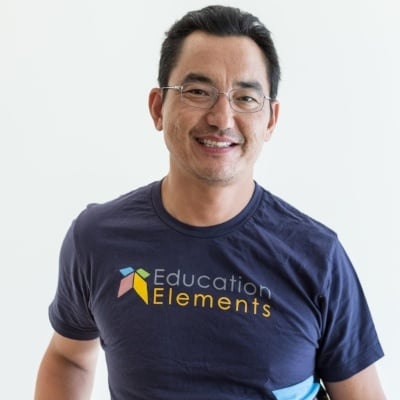
Today my focus is on what the future may bring. K-12 education has made great strides towards blended and personalized learning since the early days of 2010 when only a few charter schools like Rocketship, KIPP Empower and Carpe Diem were actively integrating technology and instruction. Today Ed Elements is working with over 100 schools across 40 districts nationwide, and there are several other districts, charters, and private schools embarking on testing and implementing new models of education, geared at increasing achievement through increasing personalization and agency. 2014 has the potential to be a big year - one in which we do not see just more classrooms and schools personalizing learning, but instead one where we see whole districts moving in this direction. It’s an exciting time to be working in edtech.
We see three big area of focus for 2014:
-
New Models: The number of school models that are being designed, planned for and launched is exponentially higher than we have seen before. The Next Generation Learning Challenge itself has spurred the design of 30+ new school models. Schools and systems are thinking bigger, and more creatively, as a result - a nice change of pace from recent history, where innovations were fewer and farther between. We are excited about the energy, enthusiasm and potential, but temper that excitement with the need for caution and careful consideration. It will be important to ensure that models are sustainable and scalable. In my conversation with superintendents around the country, understanding how these models are replicable and equitable across a district infrastructure is critical to district-wide adoption.
-
Scalability: A large district may have hundreds of thousands of students, hundreds of school buildings and tens of thousands of employees. Over 2014-15, as blended learning models become more prevalent, districts are starting to think about how these new school models scale across more than 1 building. There are several things factors as play when thinking about scale. To name a few:
-
Many districts are dealing with school buildings with very small physical class dimensions. The typical classroom might squeeze 25-30 students in a room with few windows, a closed door, limited/no wireless and limited power. These districts need flexible models that work in different types of spaces.
-
Some districts have coaches and district support staff who also need to be trained on the new school models to properly support the classroom teachers. It is not enough to train teachers, districts need staff to support them so that blended learning is sustainable and successful.
-
Districts often have limited availability to schedule additional professional development time to incorporate additional material. They need to think differently about where, how and when they deliver professional development, and just as they are thinking differently about student instruction, think differently about teacher and leader development.
-
-
Finding the Right Starting Point: There is a lot to consider, and most districts in 2014 will be working out where to start. While many conversations start with the device, our advice is to step back and first think through the instructional expectations of changing the learning environment, how personalized learning will strategically roll out across the district, and how to train and support large numbers of teachers and support staff. Only once all of these are in place and the path to success is mapped out does it make sense to turn to device selection.
In 2014, we expect the number of schools implementing blended learning to triple. We’ll see the most growth from districts implementing blended learning at scale. Instead of implementing 1 school, districts are thinking about how to implement 10-20 schools at a time. As districts implement at this scale and start to see positive results, they will continue to plan for expanding their implementations. Students finishing elementary and going into middle school will want to stick with blended learning. Students finishing middle school will need to be better prepared for college readiness coursework with blended learning. And high schoolers will be better prepared for college and career both in terms of academics, as well as skills like independent learning, goal setting, and perseverance.
Over the course of the year we will go deeper into these topics, and others, through this blog, our newsletter, as well as by adding to our library. Let us know if you have thoughts on anything we have covered, or if there are things you would like us to address in 2014. We are looking forward to a great year!




